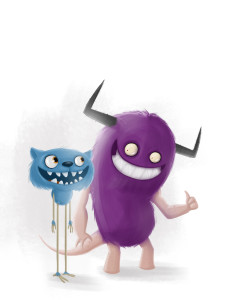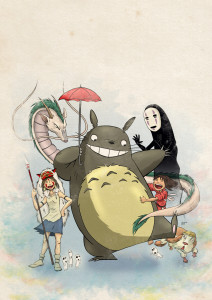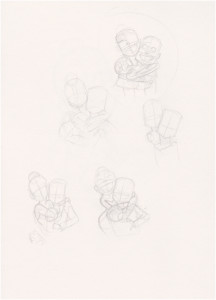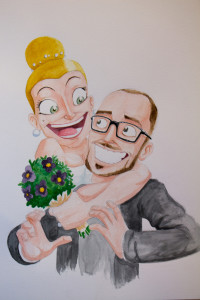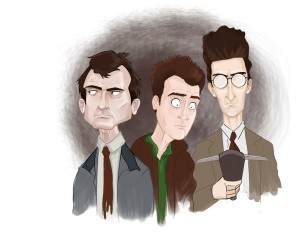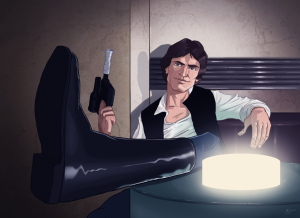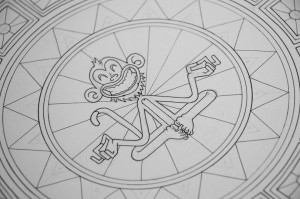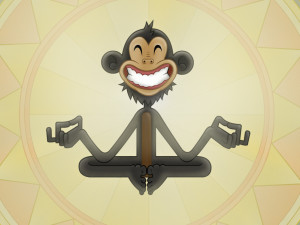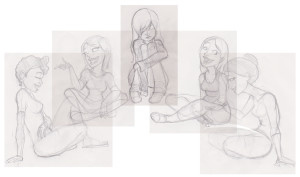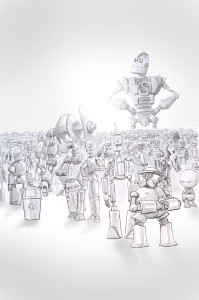 Peter Slattery is an animation director and illustrator based in Dublin, Ireland.
Peter Slattery is an animation director and illustrator based in Dublin, Ireland.
Trained in classical animation, he has worked on some of the biggest television cartoon shows of the last decade, including Foster’s Home For Imaginary Friends and most recently, Randy Cunningham: Ninth Grade Ninja for Disney XD.
“Drawing is something of an obsession for me, a habit I have to feed every day!”, he says on his Behance profile. And it’s easy to see that, once you take a look at his blog. Because in his spare time, Peter also finds the time to do personal illustrations, which come out really funny and expressive – probably because they’re inspired from his day-to-day life! I was curious to learn more about animation, about directing an animated TV series and what that involves, as well as the key to combining illustration with animation (given that the two are more different than you’d think!). So I went ahead and asked, and Peter was kind enough to answer all my questions and provide amazing insights about working in this industry.
As a kid, I was only allowed to get cartoon videos, so I grew up with a healthy appetite of Looney Tunes
Tell me a little bit about how you started this career. Did you always want to become an animator/illustrator?
My interest in animation started when I was quite young. As a kid, I was only allowed to get cartoon videos, so I grew up with a healthy appetite of Looney Tunes, my favourite cartoons. The more I watched, the more I began to realise that this may be something I want to do as a grownup! And as school progressed, I found out that it was an option I could persue. I loved to draw, so it was a logical decision! My interest in illustration came a bit later. I love kids’ picture books. While I always loved moving pictures, the more I looked at illustration, the more I appreciated the craftsmanship that went into creating it. It became something I wanted to try my hand at. What did you study?
I studied Animation Production in the Irish School of Animation. I spent four years in college, starting with a foundation course in drawing which was designed to improve your drawing skills. Then two years of animation production, which also included background design, life drawing, visual language and animation history. And the final year was spent doing my own short film.
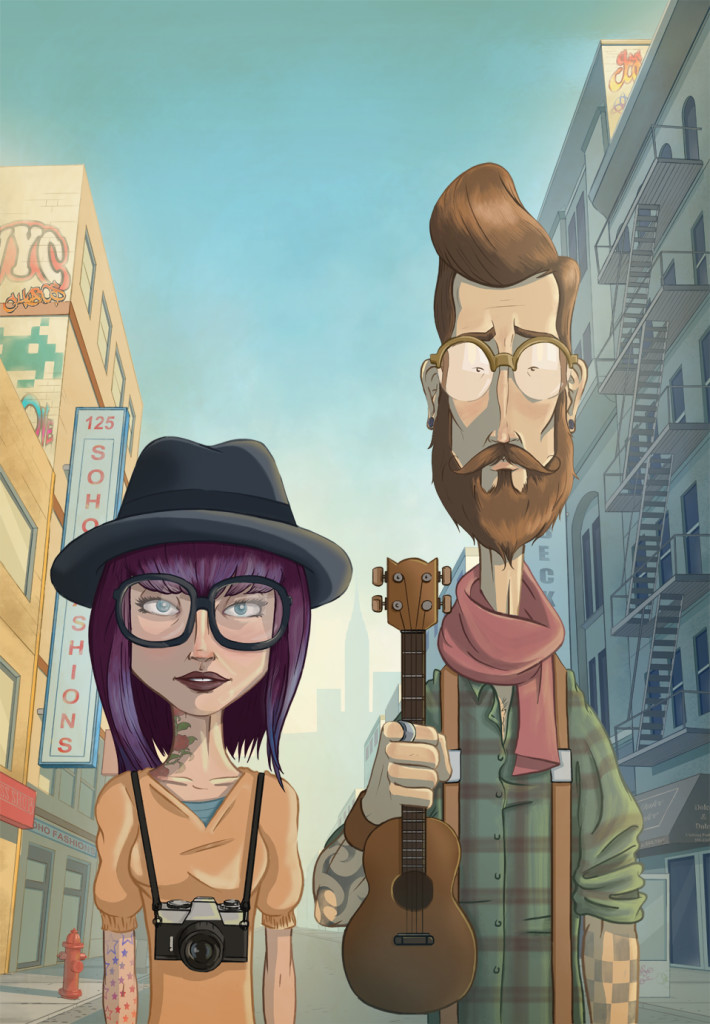
Anything is possible without school!
Do you think school is a must, for an illustrator (I’m not going to ask about animators, because I imagine no one can become an animator without going to school, right?)?
Anything is possible without school! Currently, I’m building my illustration portfolio, one illustration at a time. I haven’t gone to school to study illustration, but that doesn’t mean I haven’t been studying the art in my own time.
Thanks to the internet, there is a wealth of information online. So in my own time, I read and study what I can. But the most important thing for me is to work on my own art. I’ve learned a lot from the pieces I’ve finished. And even now, when I look back to work I did a year ago, I hate some of the decisions I made! I’m proud of everything I’ve done, but am also my biggest critic!

What was your first job?
My first job was packing shelves in a shop, but I don’t think that’s actually what the question means! My first creative job was on Foster’s Home for Imaginary Friends. I was an animator on that show, and it was a baptism of fire! I’ve been very lucky to work on some amazing projects, and that was the first one. It was a steep learning curve, but also a lot of fun!
The animation director’s job is to oversee the animation in an episode and make sure it comes in at a high and consistent level
You are currently an animation director for Boulder Media. What exactly is the job of an animation director?
There’s a huge difference between being an animator and an animation director. But you couldn’t direct without experience of being an animator. To sum it up in one sentence, your job is to oversee the animation in an episode and make sure it comes in at a high and consistent level. This involves making sure the episode is assigned to your team, depending on their strengths, tweaking the animation when it’s completed, and overseeing the style and animation to make sure the entire episode ties together. It’s a lot to think about!
How many people are involved in creating a cartoon like Randy Cunningham: Ninth Grade Ninja? And could you tell me a bit about their roles, the flow of the team?
The exact number of people involved, I couldn’t tell you! We are collaborating with Titmouse in the US, and I’m not sure of the numbers in their team. They are responsible for the preproduction of the show, the storyboards, design and vocals. As well as episode direction.
In Boulder, we have four animation teams, each working on their own episode. Each team has about 10 animators, and then there is the background department and compositing department. So there are a lot of people involved with creating a 22 minute show! Animation and backgrounds work simultaneously, following the storyboards and designs sent by Titmouse.
We have about 4 weeks to complete the episode at which time it passes over to compositing and they add special effects and camera moves and they render the episode. All in all, to get an episode to 100% completion, it takes about 6 or 7 weeks. But that’s before the work goes to Titmouse and they send back their take 2s and 3s. And sometimes 4s. For an episode to be ready for broadcast, it can take a few months.
One of the biggest problems in character animation is you get a design of a character that can’t be animated
What is the process in creating an animated character?
Well, the first thing is to know who the character is, their biography, and personality. That’s pretty important, as it can affect the look of the character.
Once you have that information, you start with thumbnails and sketches, finding the shapes and lines that work. That’s the longest part of the process. Once that’s nailed down, it’s a matter of creating the cleaned up character in Flash, or whatever other program you may be using. Depending on what the character will be doing, you’ll add blinks, mouth shapes, sometimes special poses. After that, it’s all about making him or her… or even it, move!
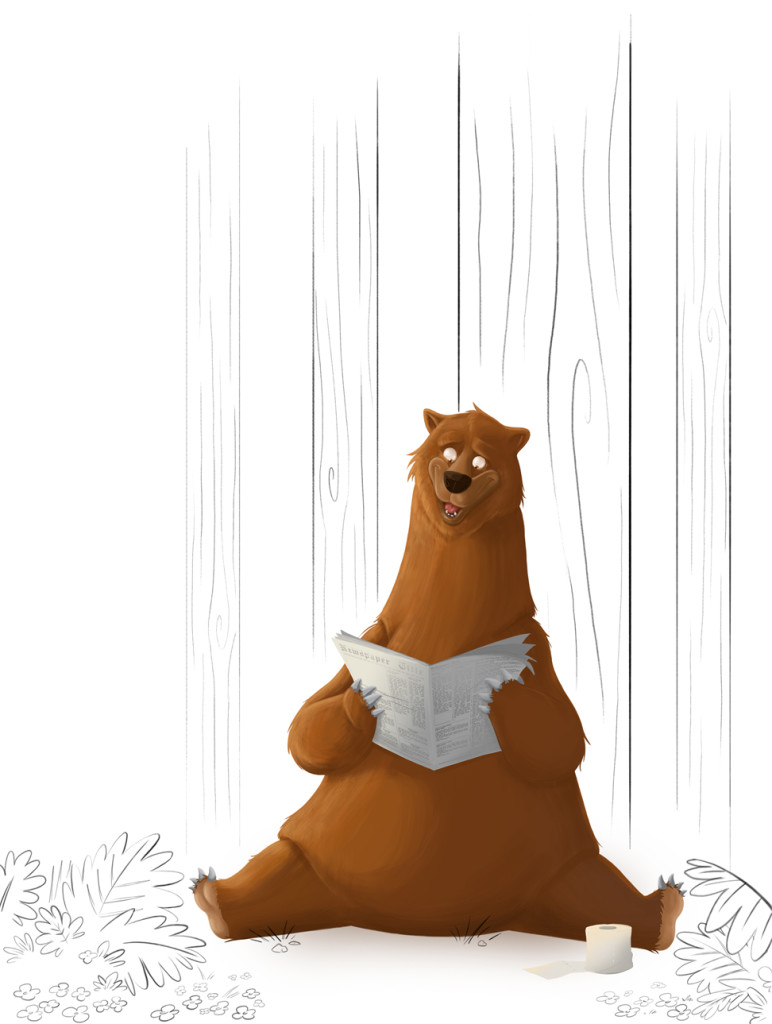
What are the nonos when you design a character for animation? Are there any common mistakes you can make?
One of the biggest problems in character animation is you get a design of a character that can’t be animated. Especially within the time constraints of a television show schedule. The character can be too complicated, or have details that take a lot of time to animate.
Sometimes the best character designs are the simplest.
It’s a great help when the designer has some experience or knowledge of what is involved in animation. That way, unnecessary or time-consuming details can be omitted and that is a big help with the workflow. Sometimes the best character designs are the simplest.
I know that creating characters for illustration is different from creating them for animation. But what would you say is the biggest difference between the two?
Knowing the limitations of the medium is pretty important. It goes back to the previous question of knowing the time constraints and what can be feasible. Sometimes the most elaborate and beautiful illustrations just will not work in animation. And likewise, the simplest animation designs will sometimes seem just lazy in terms of illustration.
While animation and illustration can use the same set of talents and skills, they’re still two completely different mediums, with requirements and knowledge that don’t always translate to each other.
Sometimes the most elaborate and beautiful illustrations just will not work in animation. And likewise, the simplest animation designs will sometimes seem just lazy in terms of illustration
Do you work both digitally and traditionally? (I had a peek at your Behance bio) 🙂 I’m curious what tools you use, in both situations.
I do both traditional and digital work. I grew up in an age where digital wasn’t really an option unless you worked at a major design or animation studio. Photoshop and the likes didn’t exist, so drawing and painting was done the old fashioned way!
So I’m most comfortable with a piece of paper and a pencil. It’s what I’ve always loved and still practice almost every day. When it comes to colour, I absolutely love watercolour. It’s amazing what can be done with it. And while it takes some discipline to get it right, I love the look and feel of it. It’s something I’m still finding my feet with, and each time I use watercolour, I learn something new.
But on the other hand, digital can offer you things that just don’t exist in traditional media. Effects, layering, and the undo button! I love what digital can do to lift your art when you find yourself hitting a creative wall. What I really like to do is to mix traditional and digital. Doing a painting and then messing around with it on the computer to take it to a whole new level.
Finding my style is the thing that challenges me the most
I believe we all find new challenges in our work, no matter how much we evolve. What are your challenges, at this point?
Art is an ever evolving process and skill set. I’ll draw something one day, and if I were to do the same thing the next, do it a whole lot differently. I look at work I finished a year ago and cringe at how it looks. I’d do it completely differently now. But that’s all part of the process. Finding my style is the thing that challenges me the most. My signature style that I can call my own. It’s something I’m very gradually nailing down and I’ll get there eventually! That, and learning new skills and ideas with how I complete an illustration. That happens every time I work on a piece!
What makes you get up in the morning, everyday?
Now? My 12 week old baby girl! She gets me up every morning whether I like it or not! And I love it! In terms of my work? Well, there’s always a helluva lot of work to do, so that keeps me going. There literally aren’t enough hours in the day. It never ends, and that’s all part of what I love about doing what I do.

You really have to make the time to work on your own illustrations. I know everybody gets to that point at about 10 pm where you sit down at the desk and just think ‘do I want to do this right now, or do I want to fall onto the couch?
How do you handle both family life and your career? What is the key to keeping it all balanced and how do you find the time to do personal illustrations?
You really have to make the time to work on your own illustrations. I know everybody gets to that point at about 10 pm where you sit down at the desk and just think ‘do I want to do this right now, or do I want to fall onto the couch?’ I think that a lot and then ten minutes later am delighted I did sit down to work!
My animation job is a 9-5 thing, and sometimes I take it home. But it’s not all consuming. My family come first and when I go home, my focus is on them. When they’re in bed, or my wife is playing with the baby, then I can snatch some time to work on my illustration.
I won’t lie, it’s not always easy to find the time. But I’ve a very generous wife and she knows how much my work means to me. She’ll sometimes take the baby so I can do a bit of work on my own illustrations. I try to find even just an hour each day to tip away at things.
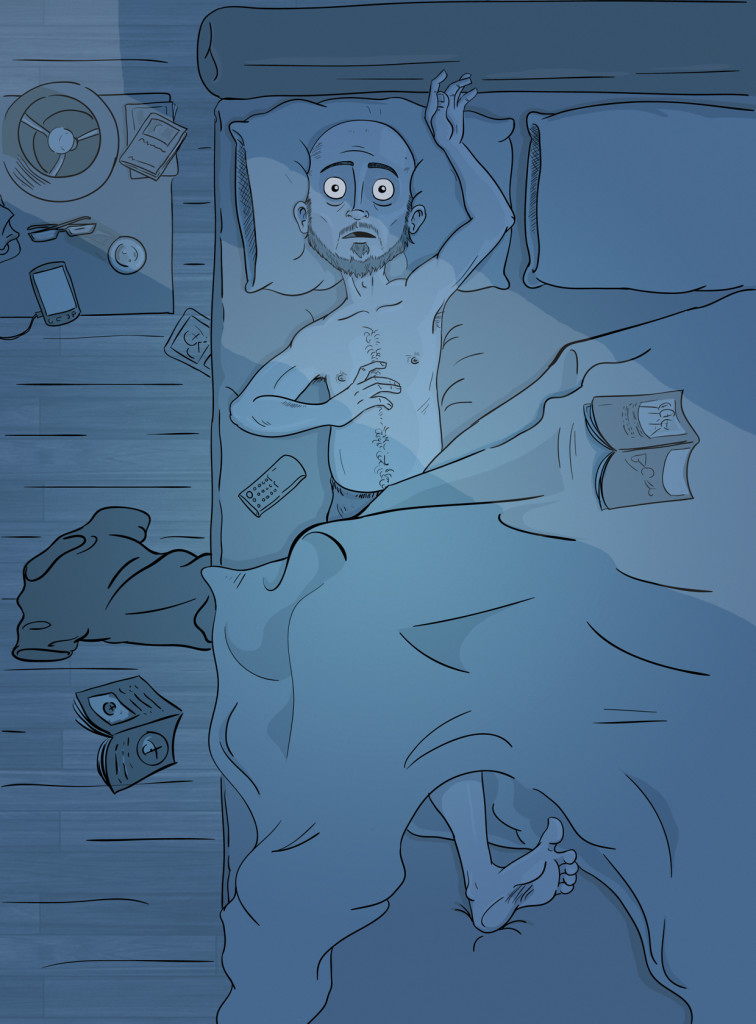
The primary place I’d tell somebody to look is the book ‘The Illusion of Life.’ It’s a Disney book and the bible of animation
What would you advise an illustrator who wants to become a cartoonist? What steps should he follow and how long should he expect will take until he learns the basics?
Animation is a totally different discipline than illustration. There’s quite a bit to learn in terms of the core principles of animation, without which animation can look just wrong. It’s not just a case of stringing a bunch of drawings together and hoping they move correctly. There’s lots to think about.
So in that sense, a college course would probably be pretty essential. But there are other things you can do to learn the basics. The primary place I’d tell somebody to look is the book ‘The Illusion of Life.’ It’s a Disney book and the bible of animation. It deals with the Nine Old Men, the core team of animators who worked on the Disney classics and the principles they brought to animation. Richard Williams’ Animator’s Survival Kit is also essential reading for anyone interested in animation. There are so many online resources too, there’s so much to learn!
See more of Peter’s work on his: website | behance | tumblr | facebook | twitter
